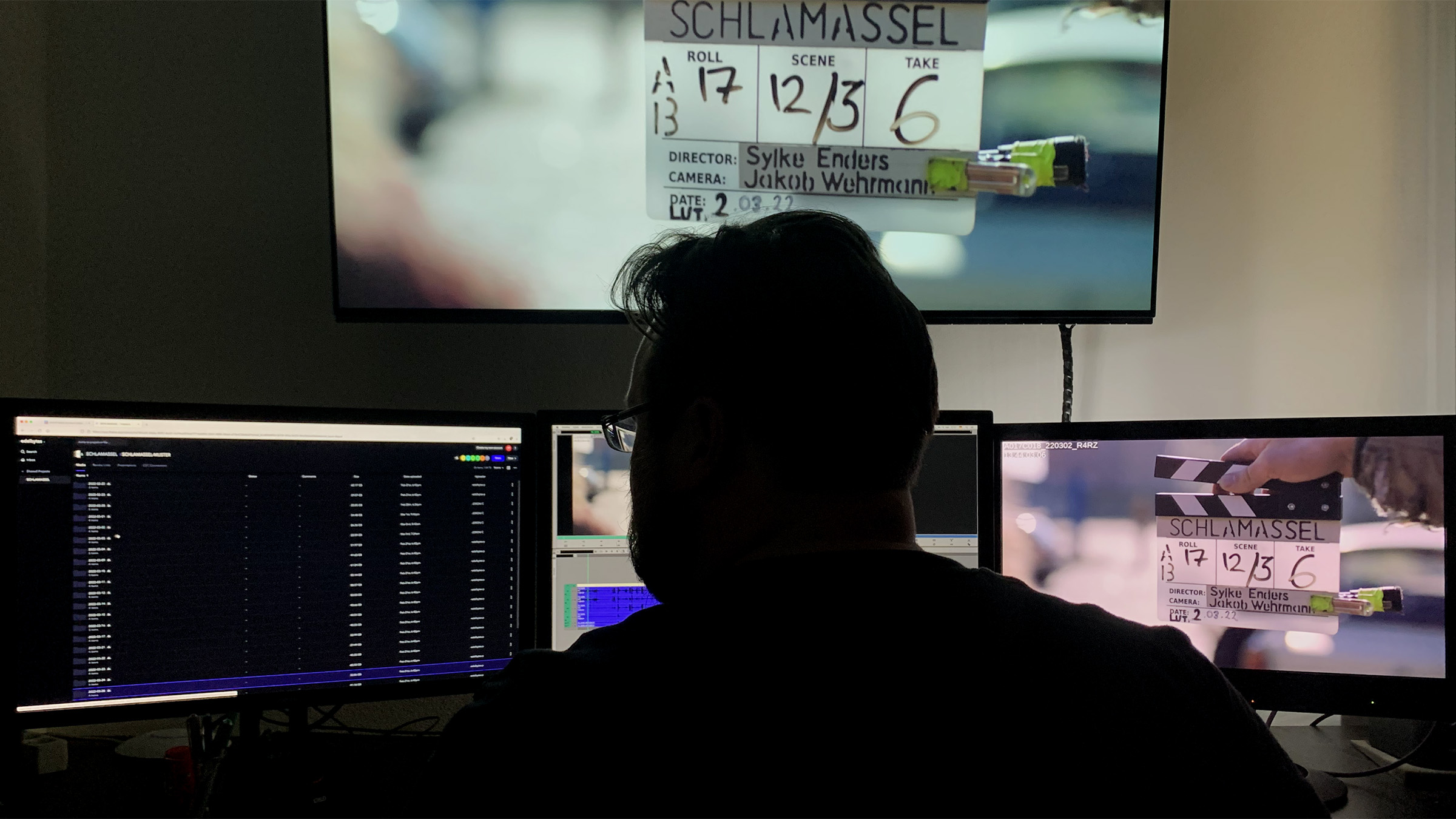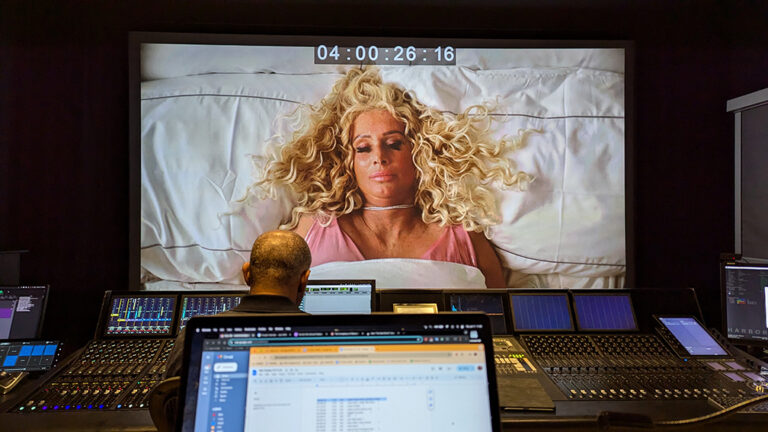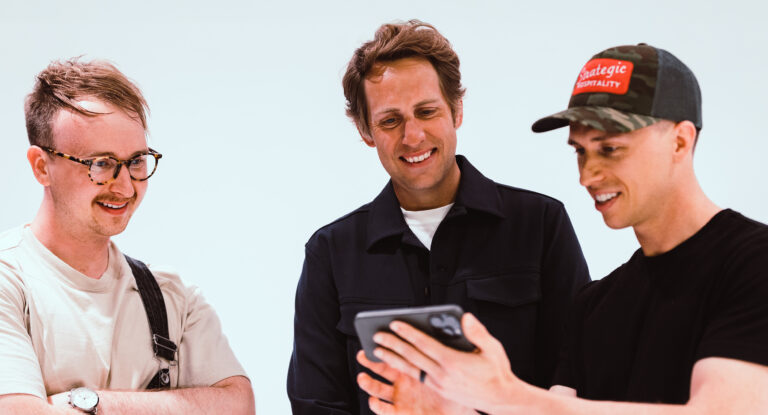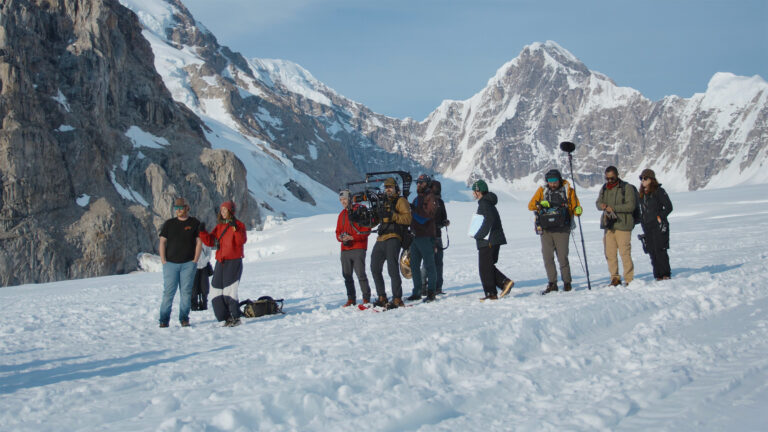We’re always excited to announce partnerships and integrations with Frame.io. But what’s even better is when we see them used for the first time, on actual productions, with meaningful results.
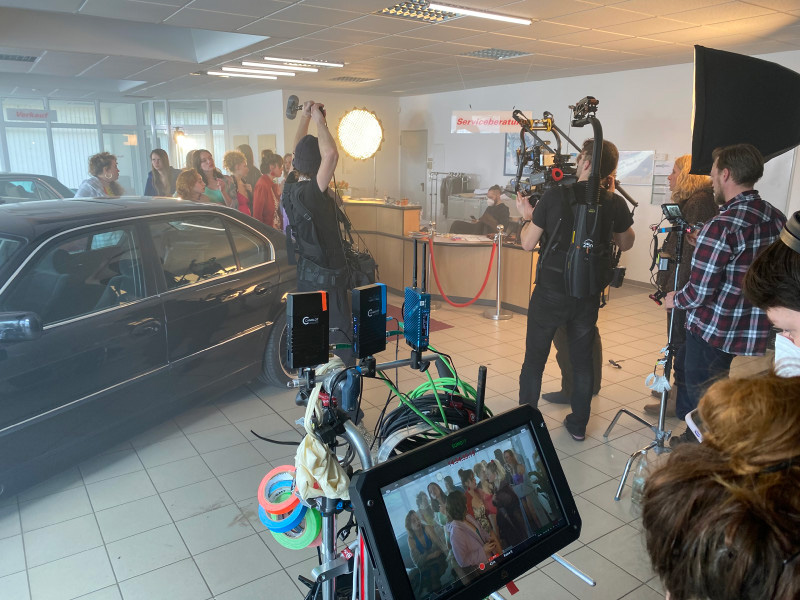
In this installment of Made in Frame we focus on Schlamassel, an indie film produced through international production companies Joroni Film and CZAR, using the new integration between FDX FilmDataBox and Frame.io. It’s the first time this workflow has been used on a feature film, and we were lucky enough to speak with the team behind it to learn more about how it worked in a real-world situation.
Powerful new partnerships
The FDX Box is a powerful device that allows you to plug in a camera card and walk away while the original camera files are backed up to multiple places and transcoded to your editing codec of choice. As we announced at NAB, the FDX is now fully integrated with our robust Camera to Cloud API, which lets you upload your transcoded H.264, DNxHD, AVC-Intra, or ProRes files to Frame.io.
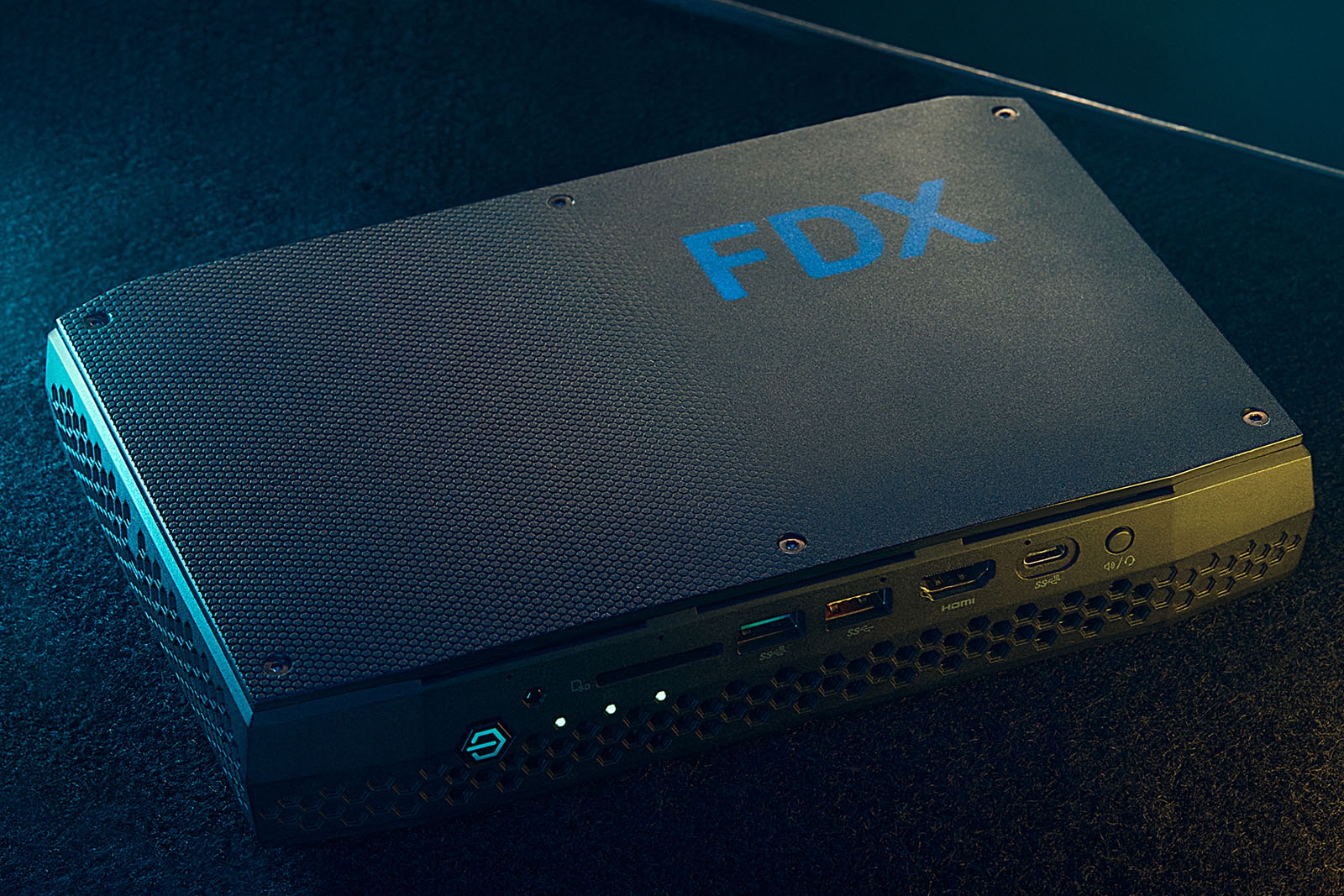
What this means is that you can get all of your assets into one place in Frame.io and use our numerous NLE integrations to start cutting together transcoded files as soon as a camera mag has been backed up. You can also deliver dailies to on- or off-set crew or stakeholders so they can quickly see what they’ve shot, or what they might need to shoot.
Powering new workflows
The Camera to Cloud (C2C) workflow was already available to productions using cameras by RED, ARRI, Panavision, and Sony.
But FDX makes it possible to use any camera that records to a memory card or SSD hard drive and take advantage of centralizing assets in Frame.io utilizing our Fixed Folder structure.
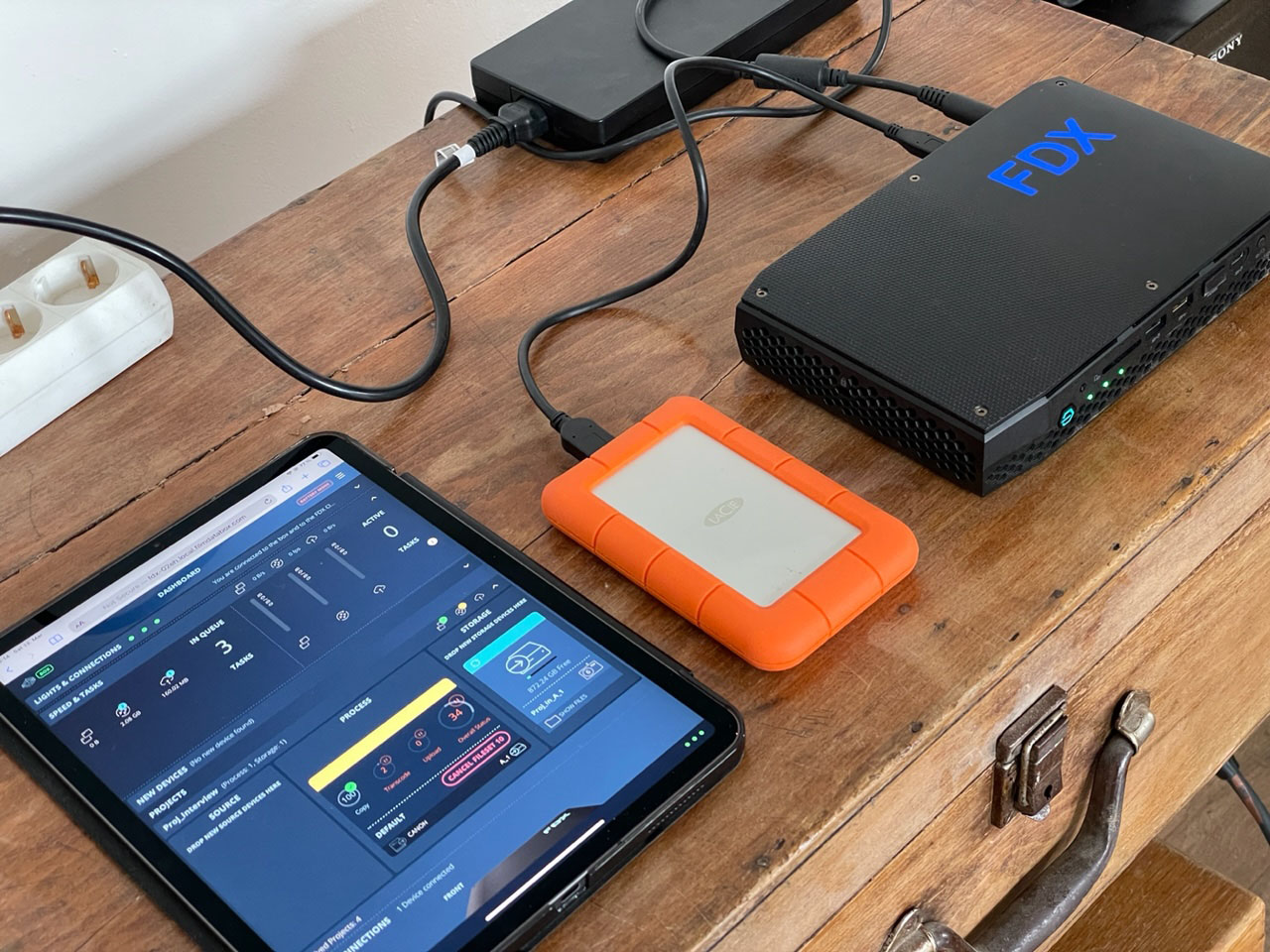
In the case of Schlamassel—as with any indie film—saving time matters. A lot. So when equipment house 25p in Berlin offered the team the chance to try this new integration, cinematographer Jakob Wehrmann of edelbytes postproduction (also in Berlin) agreed. We at Frame.io were, of course, delighted to have this opportunity to test the integration on an actual project.
A co-production between Joroni Film, CZAR Film,WDR and MDM, and supported by BKM and MV Filmförderung, Schlamassel is directed by Sylke Enders, a Berlin-based writer and director known for realist tales about working moms and coming-of-age stories.
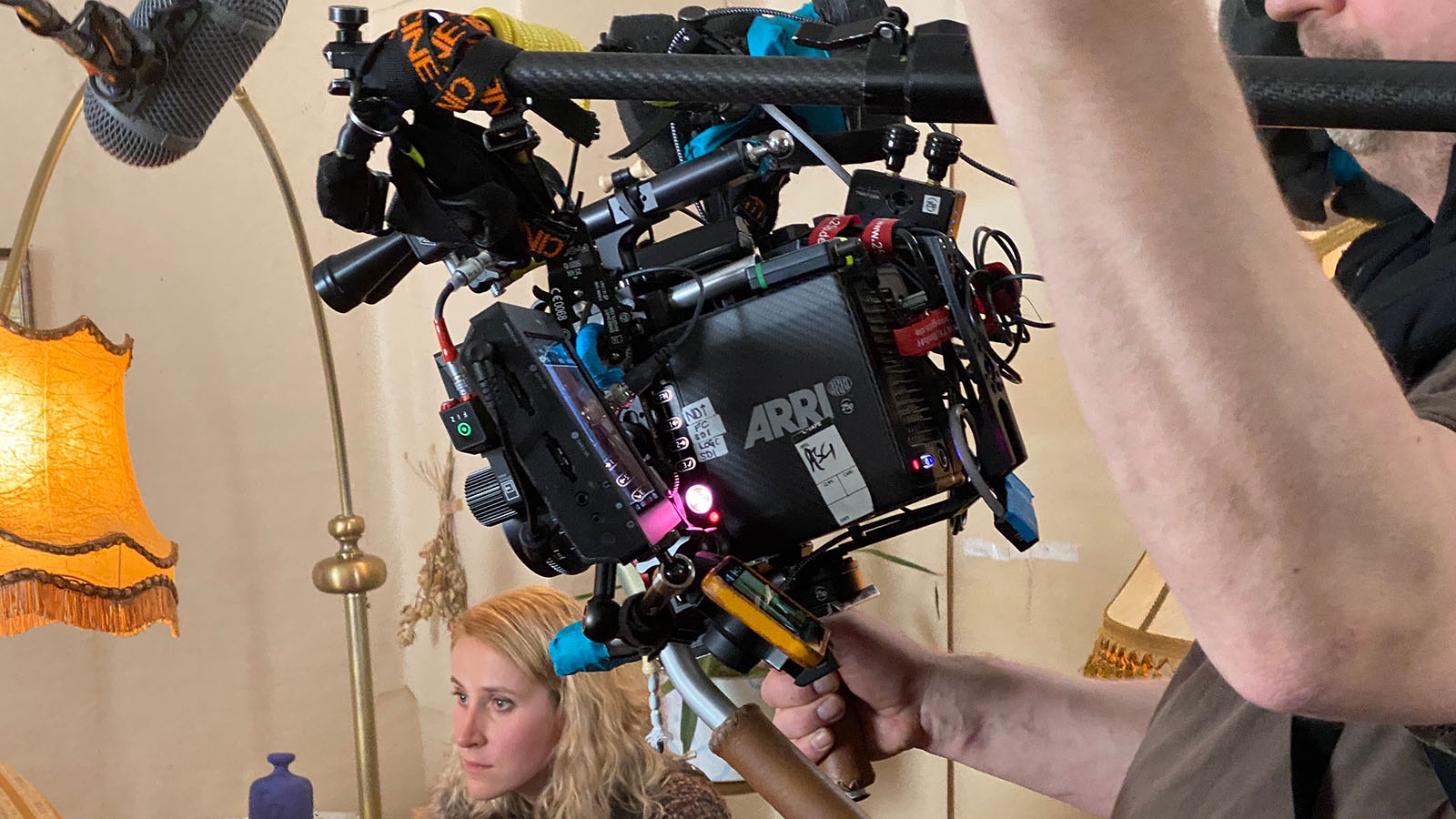
The film is set in 1996. As it’s described on the CZAR website, “While Dolly the sheep has been cloned into life, Grandma is dead, and the family is tearing itself apart. Johanna, a 32-year-old intern at the local newspaper, impulsively confronts a former guard of a concentration camp. But instead of finding release for her own discontent and anger, she has to face her own Schlamassel which translates in English to ‘mess.’”
Which is the opposite of what the production was. If anything, the FDX-Frame.io workflow kept things running smoothly and efficiently, even with a quick 26-day shoot. The lean crew numbered approximately 27, with only about 30-35 people on set each day including talent.
The camera package consisted of an ARRI mini and Blackmagic 6K—the latter of which has not been previously supported through other C2C integrations. They shot in UHD at 25p, framed at a 2:1 aspect ratio.
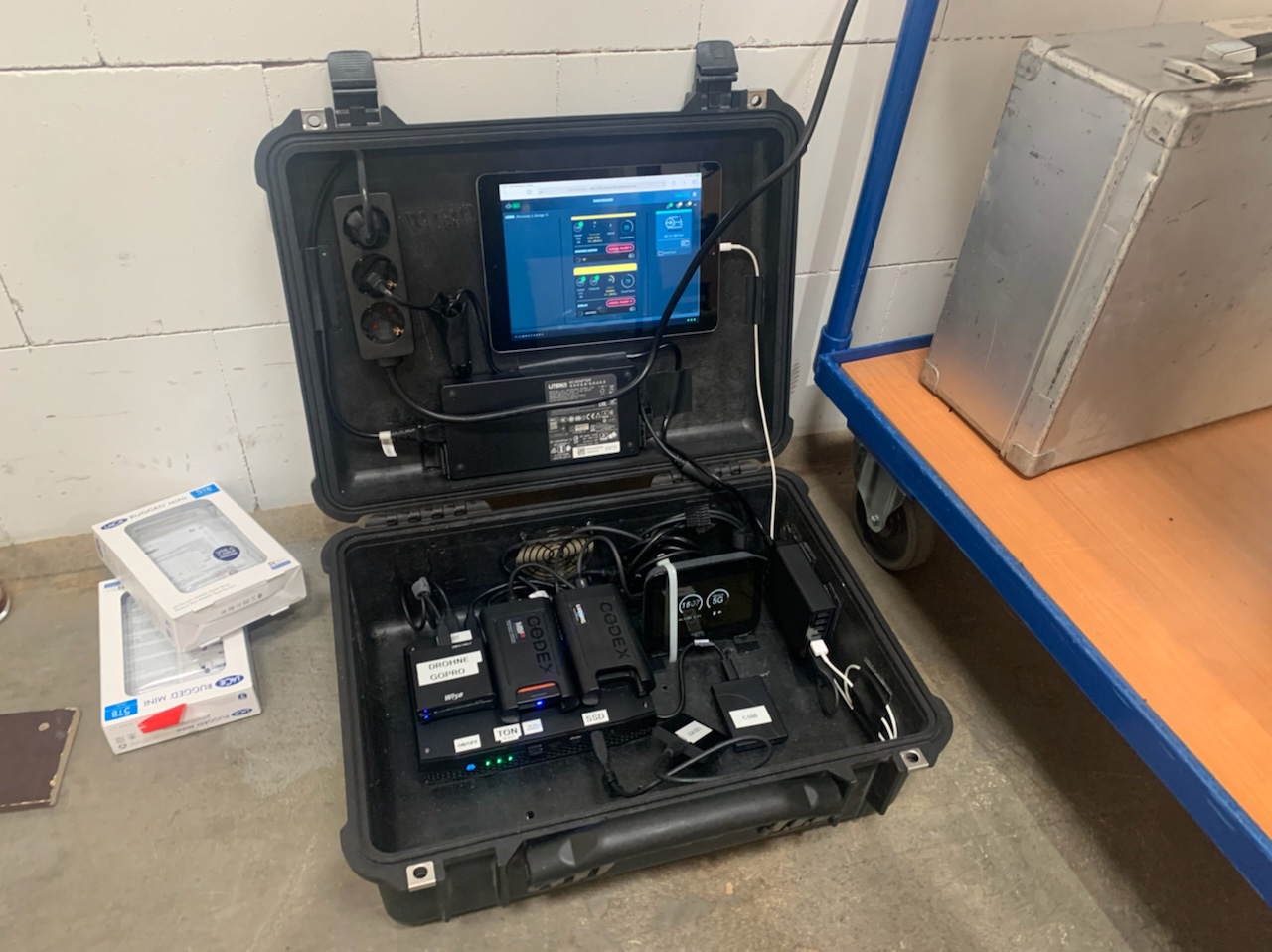
On set, the DIT used the FDX with a cellular modem connected to create HD proxies with LUTs and timecode burned in, which were automatically uploaded to Frame.io and then manually sorted into days once a daily ingest was completed.
Capturing at ProRes 4444 for the ARRI footage and ProResHQ from the Blackmagic camera, they created ProRes LT proxies that were ingested to Avid via rewrapping.
Audio was captured to a recorder but a mixdown was also sent to both cameras so that the proxies could be used as dailies with sound. Later, the proxies were resynced to the original sound files which were also available in Frame.io.
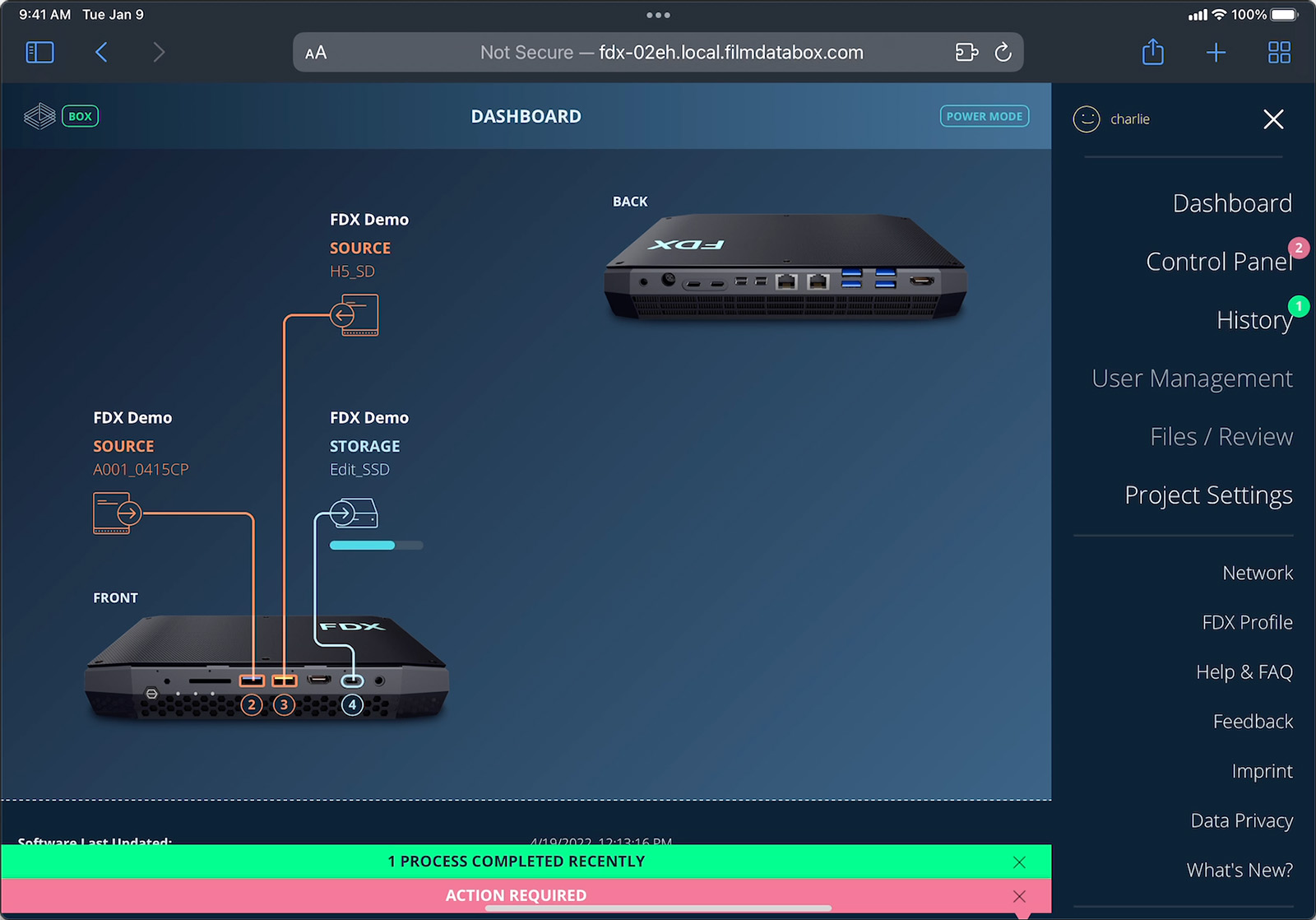
A measurable difference
According to CZAR production manager Paul Dehn, the team was spread throughout Germany. They shot mostly in the area around Pasewalk in western Pomerania, with six days in Berlin and Potsdam.
On set, the director, DP, and production were able to watch dailies quickly after shooting. Off set, the producers and investors received Frame.io links to the dailies so they could review and comment on the footage, if necessary.
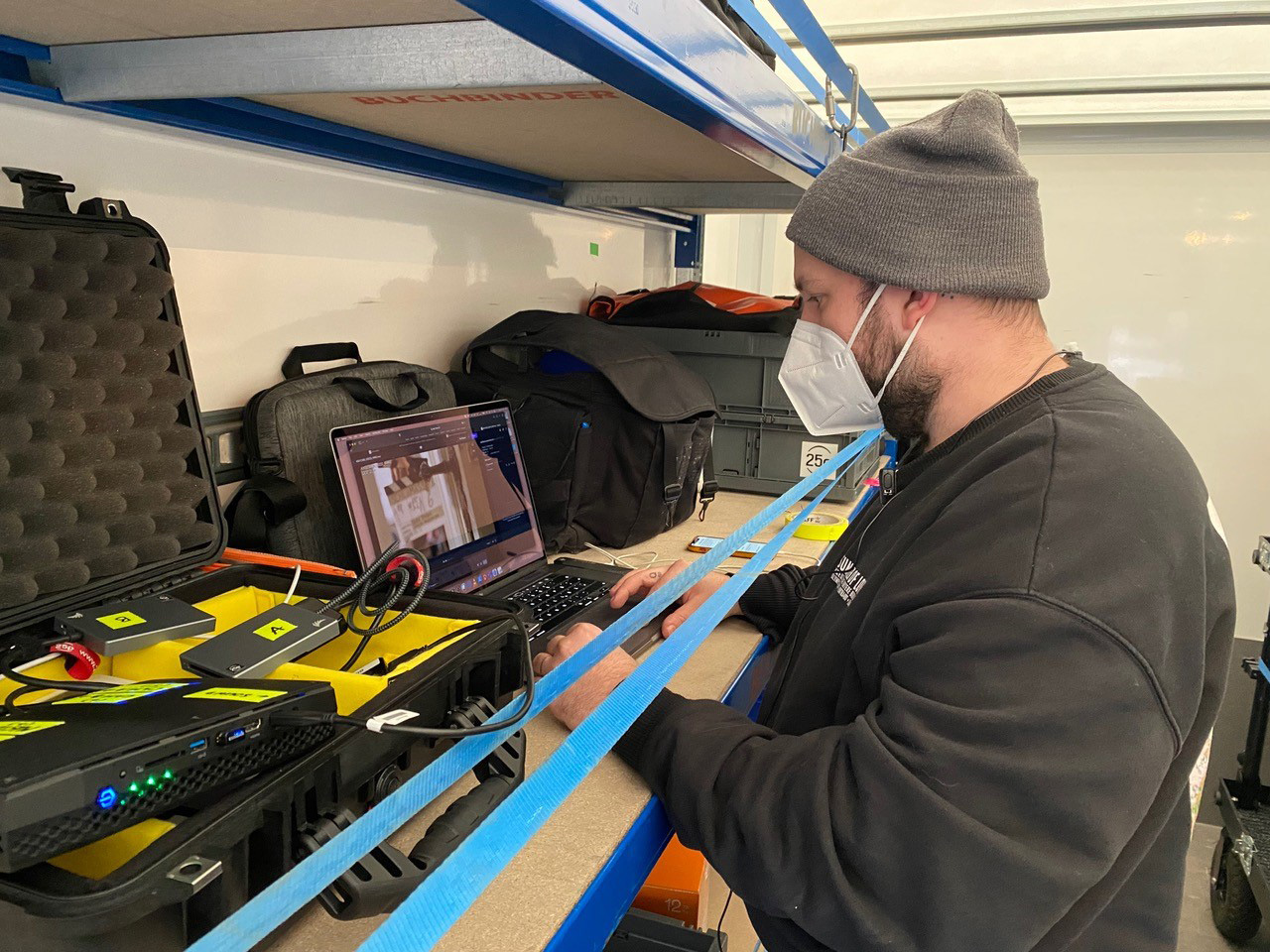
A CZAR in-house assistant editor prepped the footage from Frame.io for editor Sebastian Lemke, who was working from his home office in Berlin. The team was also able to share the dailies with the film’s composer, Bert Wrede.
“This process allowed us to have the editor look at the footage promptly and give us hints if there might be shots missing so we could schedule for that,” Paul says. “It didn’t happen a lot on this production, but it’s important to have that opportunity.
The FDX-Frame.io integration allowed us to be more or less a day quicker than with manual transcoding and uploading to a dedicated server.”
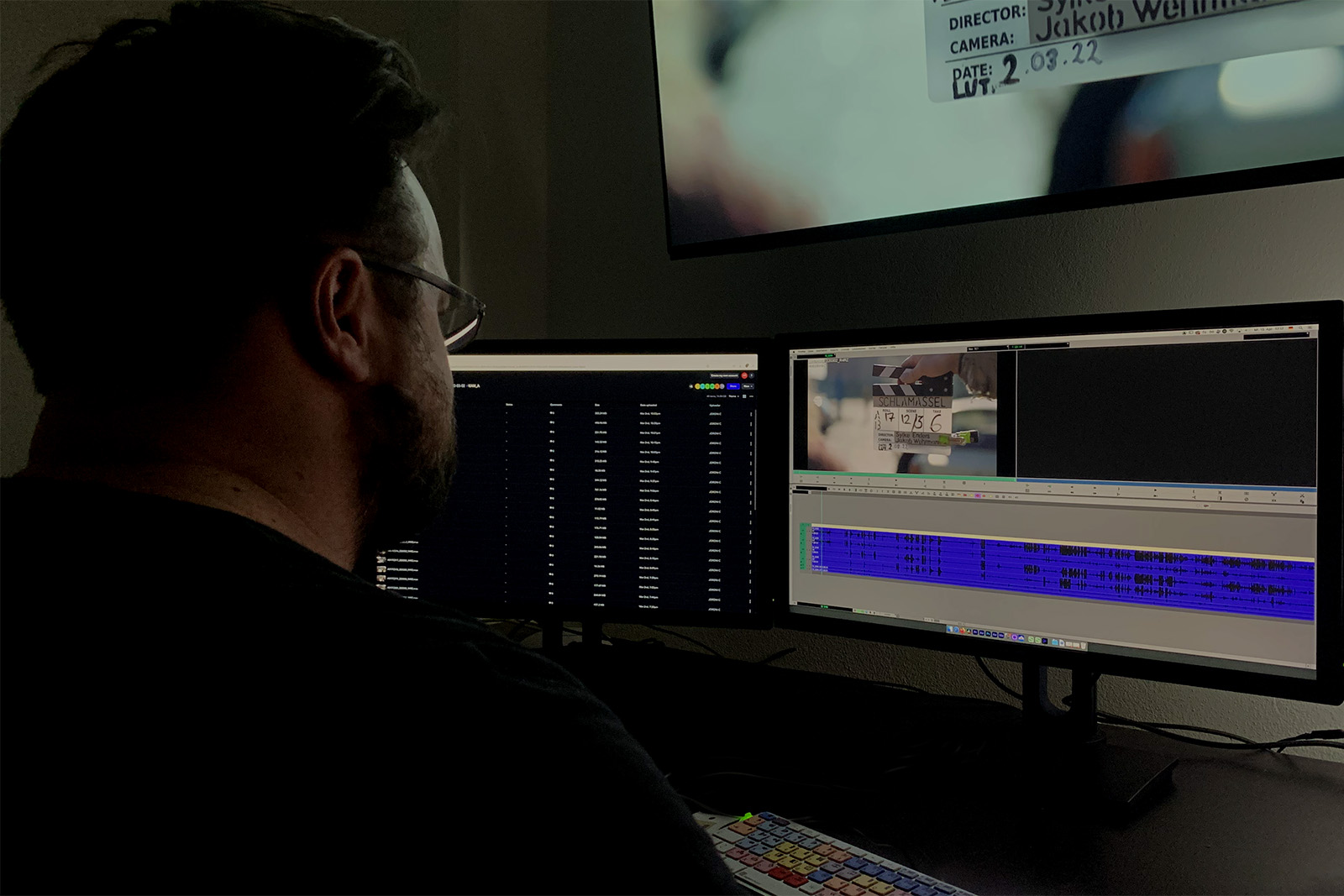
Previously, the team would have had to physically bring the SSDs or HDDs with the day’s footage back to the editing team at CZAR, either with a production driver or via upload. The editing team would then have to transcode to proxies, ingest to Avid, and upload to server storage.
“With FDX doing all the transcoding and uploading directly to Frame.io for us, we no longer had the need to transport hard drives by car or wait for an editing team to download, transcode, reupload, and so on,” Paul says.
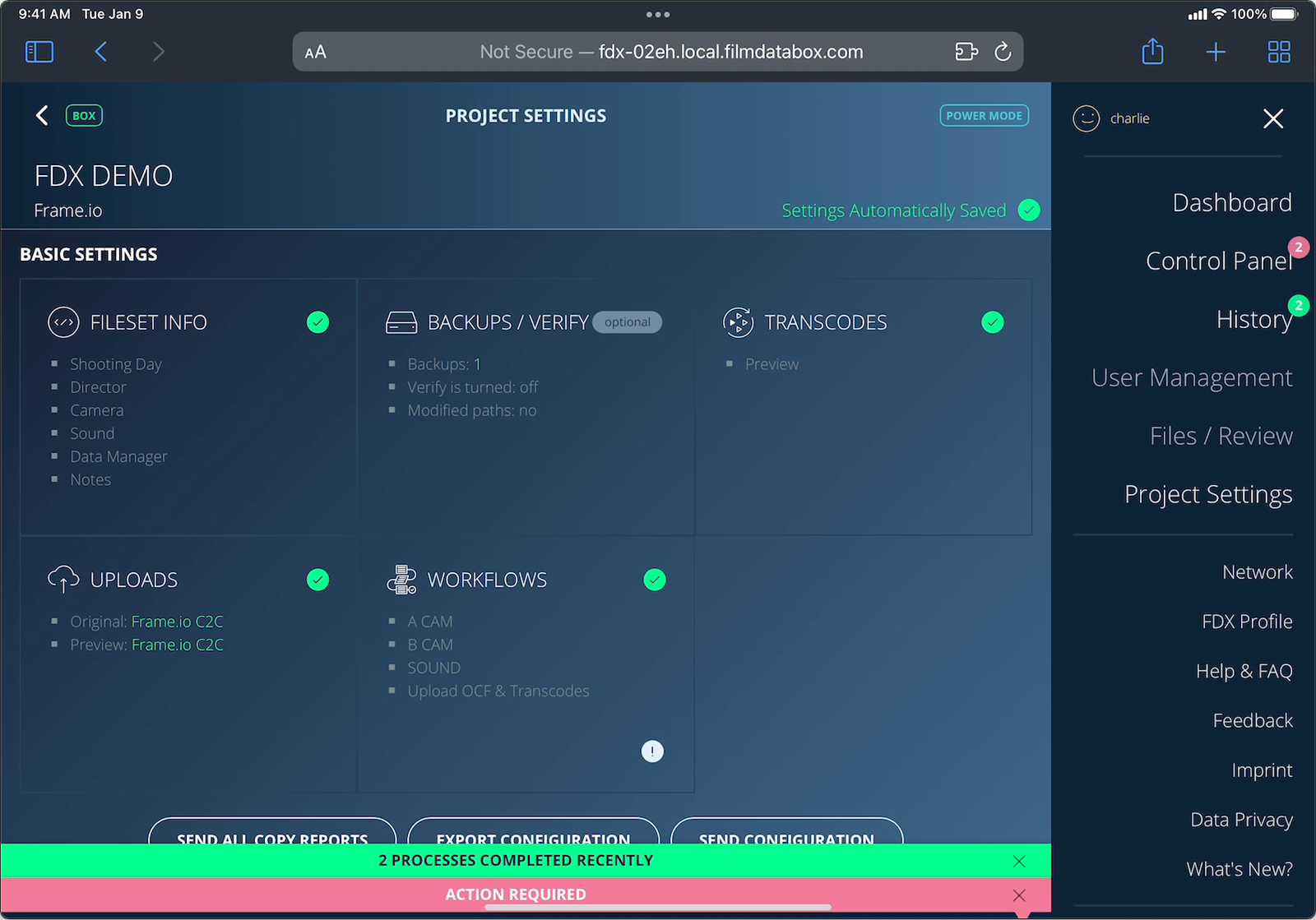
The FDX transcodes, backs up, and uploads assets automatically. So, after setting up powerful custom workflows with the FDX’s easy-to-use workflow builder, the DIT was able to simply attach the media to trigger those workflows and let them run on their own.
The best technology is technology that is invisible, and the FDX enabled the DIT and the team on Schlamassel to let a process that’s typically high-touch and high-anxiety fade into the background.
Making the technological flow on set as seamless as possible is part of the DIT’s job, and the FDX does its job very effectively.
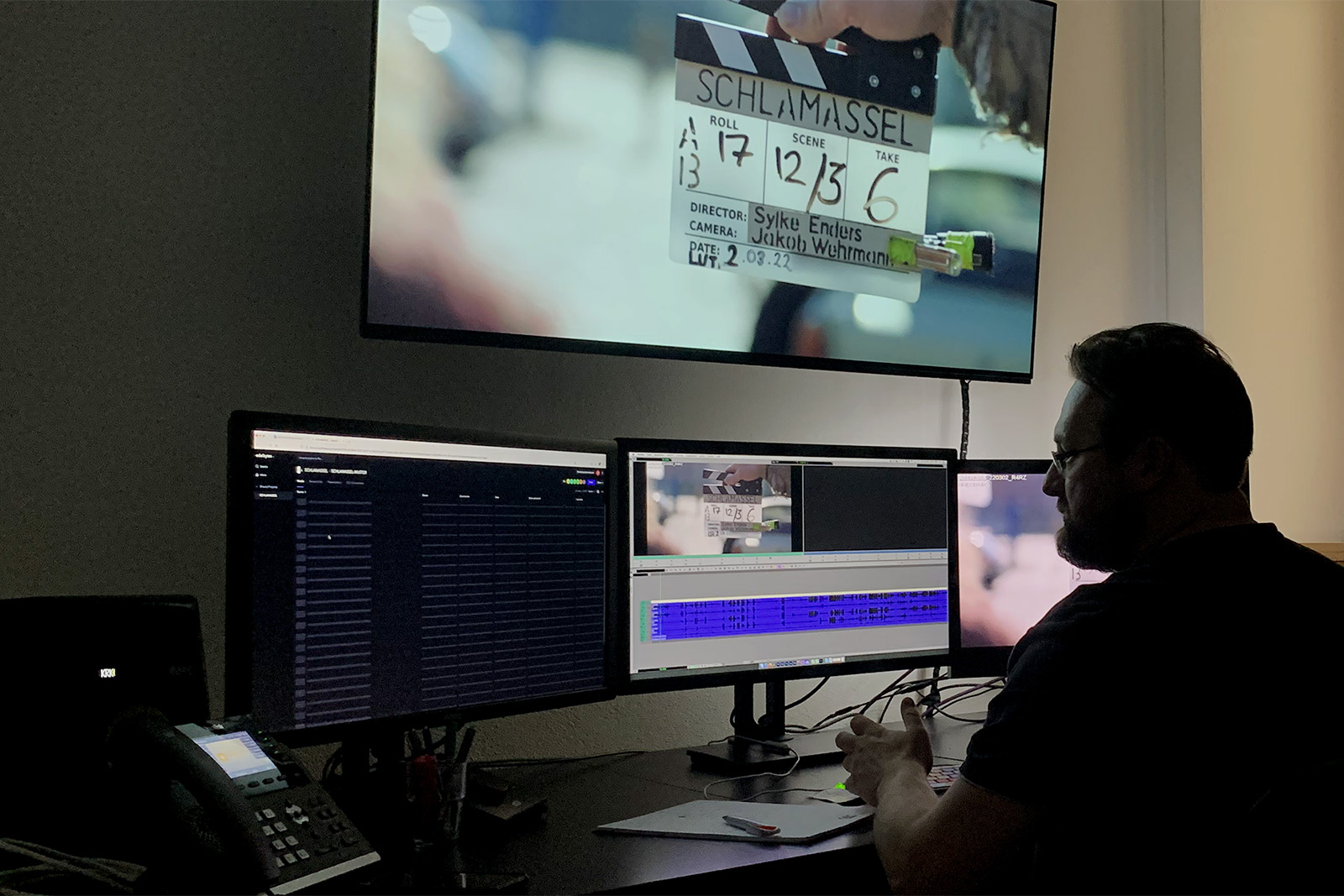
Opening doors creatively
We always talk about how technology for technology’s sake isn’t the point but rather that we create technology to enable creativity.
There’s not a production in the world that doesn’t benefit from a workflow that alleviates stress and saves time (and money). But especially on an indie feature, when every resource is precious, it’s great to hear about the unexpected benefits of a new workflow.
In the past, we’ve talked about how Camera to Cloud workflows can create new opportunities on the set—for people with networking experience, or for DITs to do more “creative” work.
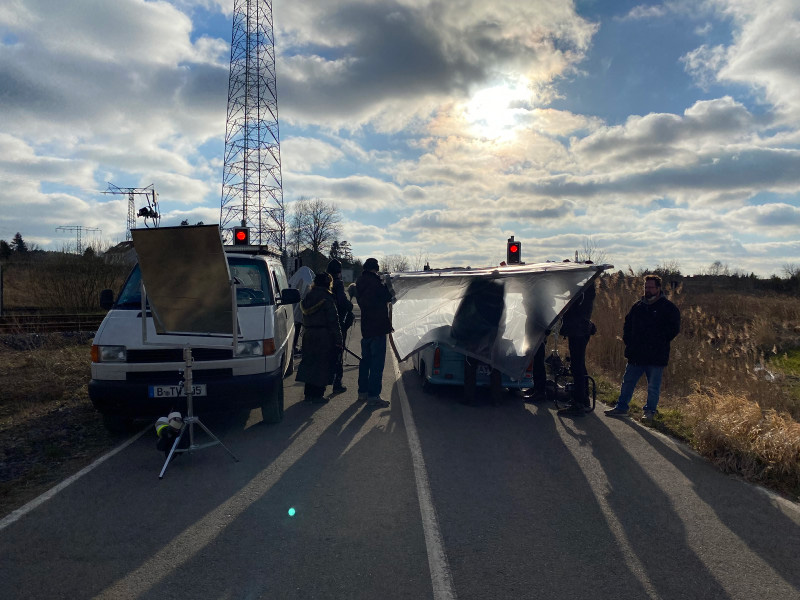
On Schlamassel, for example, the DIT was able to branch into some other areas on set. Instead of having to spend all of his time wrangling data, he was able to function more as an additional camera assistant instead of “spending a lot of time behind a PC,” Paul says.
It’s also a testament to the reliability of the system that it didn’t need human intervention. The DIT could simply put the SD card into the FDX box and, according to Paul, “the backup and copying was done automatically and was absolutely reliable. Every automated process that is bulletproof eliminates sources of errors, so this is an absolute plus.”
I would recommend using Frame.io and FDX in any production workflow with remote editing or shooting.
Assistant editor Justin Ebersbach agrees. “Our workflow with FDX and Frame.io went along great and without any problems.”
“It was very easy to find proxies after upload from set, and downloading went fast and without any errors. ProRes proxies need to be consolidated to MXF for AVID, but this is merely a mouse click, so no problem at all. I would recommend using Frame.io and FDX in any production workflow with remote editing or shooting.”
And, for Jakob, having access to dailies while still on set is a creative advantage because, as anyone who has used this workflow knows, having faster availability to what you’ve shot saves time and stress.
Knowing that what you need is what you’ve got is one of those intangibles that you can’t necessarily put a price on, but also gives you the ability to move onto the next day’s shoot with confidence.
The way forward
As we’ve heard from many of the teams that have utilized the Camera to Cloud workflow, the advantages are clear, which is just one of the reasons why this new FDX partnership is so important.
Opening up the workflow to previously unsupported cameras, freeing crew to step out from behind a computer, and giving creatives peace of mind make this a workflow that Paul says he will absolutely recommend for all of his future projects.
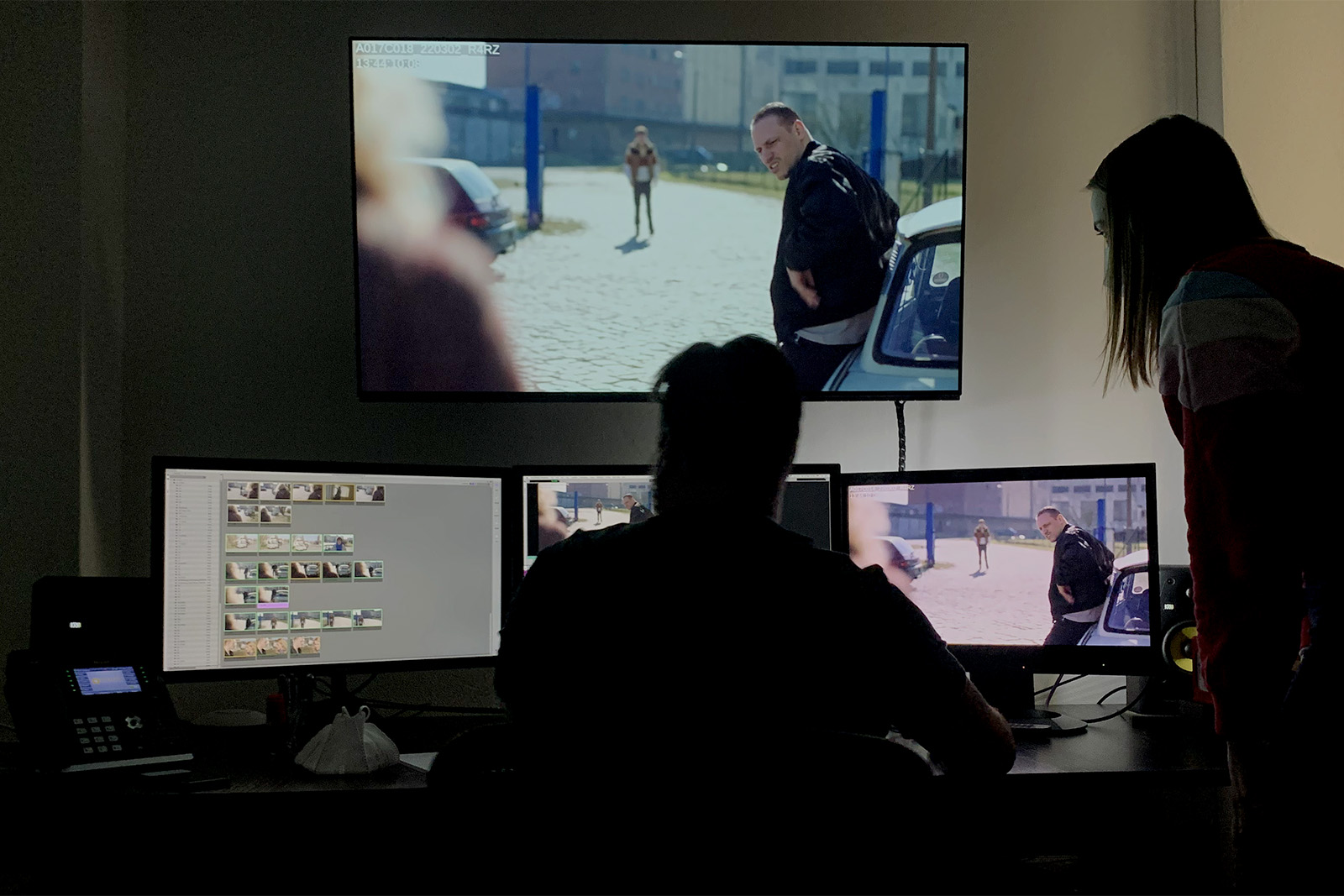
For indie projects, there’s virtually no downside. “Everything in every corner was and is challenging, as it always is in film production,” Paul says. “For our budget and for our general movability with our main unit on set, it was crucial to be able to reduce the size of our crew to a minimum. This workflow was a key component in doing that.”
Anything that keeps productions running smoothly from the camera to the cutting room and beyond is what we’re always seeking to achieve. From our core product to our new partnerships and integrations, keeping everything securely centralized but easily accessible is the essence of an ideal cloud-based workflow.
Because, after all, no one wants their production to be a Schlamassel.

